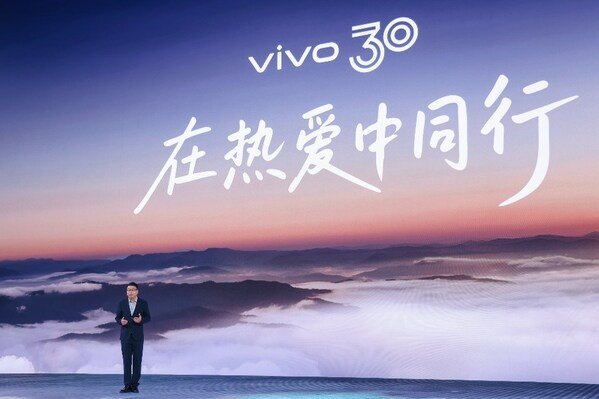Vivo celebrates 30 years with innovation in mixed reality and new image strategy

The live Chinese technology company celebrated its 30th anniversary in Dongguan, China, with an event that included the presentation of its mixed reality viewer Vision Discovery Edition and the Image Ceremony, framed in the update of its visual strategy. This launch marks a significant step in its incursion into space computing and immersive experiences.
The Vision Discovery Edition becomes the first mixed reality viewer developed by a smartphone manufacturer in China, which the company says positions it as the first in the country to combine smartphones with XR devices.
During the event, Hu Baishan, executive vice president and COO of live, stressed that the commemoration is not only a space to remember milestones, but also to reaffirm the company’s commitment to innovation and the experience of its users. He pointed out that the path of the brand has been guided by the passion, technology, and purpose of allowing technology to illuminate beauty. He added that I live projects a centenary journey oriented towards the construction of a sustainable business with lasting impact.
A light and immersive experience in mixed reality
The Vision Discovery Edition is the result of four years of development and seeks to transfer mixed reality to everyday use. Its design is oriented to daily comfort, weighing 398 grams, measuring 83 mm, and having a thickness of 40 mm. According to the company, these dimensions make it 26 per cent more compact than the industry average. To improve ergonomics, it incorporates four sealing sizes and eight types of foam pads, which facilitate its adjustment and prolonged use.
The viewfinder works with the OringOSVision system, which allows gesture-based interactions. It includes eye monitoring with an accuracy of 1.5 degrees, a range of 175 degrees, and 26 degrees of freedom in the recognition of finger movements, which enables more natural controls compared to traditional touchscreen methods.
In the visual section, it has dual Micro-OLED displays with 8K binocular resolution, 94 % DCI-P3 color covers, and DeltaE precision. The manufacturer has also implemented brightness and binocular color calibration in order to reduce visual differences that can generate discomfort.
The device integrates the Qualcomm Snapdragon XR2 Gen 2 platform, which as a lively offers a 2.5-fold higher GPU performance and up to eight times more capacity in artificial intelligence processing than the previous version.
As for apps, the viewfinder is oriented to entertainment, games, and productivity. It includes options such as sports or e-sports broadcasts live with panoramic viewing or on a split screen. You can also project a virtual screen up to 36 meters, designed for cinematic experiences.
Integrated image strategy and ecosystem
In addition to the presentation of the viewfinder, Vivo announced an update to its image strategy, oriented to the creation of an ecosystem based on scenarios of use. The company noted that this approach seeks to strengthen its capabilities in areas such as night photography, portraits, telephoto, and video, while incorporating functions adapted to the new demands of users.
The strategy also aims to expand access to professional-level tools to a wider audience, including aspects such as image safety, health applications, and interconnected image experiences between devices.
In this context, collaboration with ZEISS enters a new phase after five years of joint work. The alliance has made it possible to integrate the product philosophy centered on the live user with the optical experience of ZEISS, establishing references in mobile photography.
According to André Kitz, head of ZEISS, cooperation between the two companies goes beyond hardware and software, developing as a continuous learning process to meet the needs of consumers and the global image community. Kitz added that the shared goal is to innovate in optics applied to smartphones, to offer advanced, intuitive, and accessible photography and video tools for millions of users worldwide.










